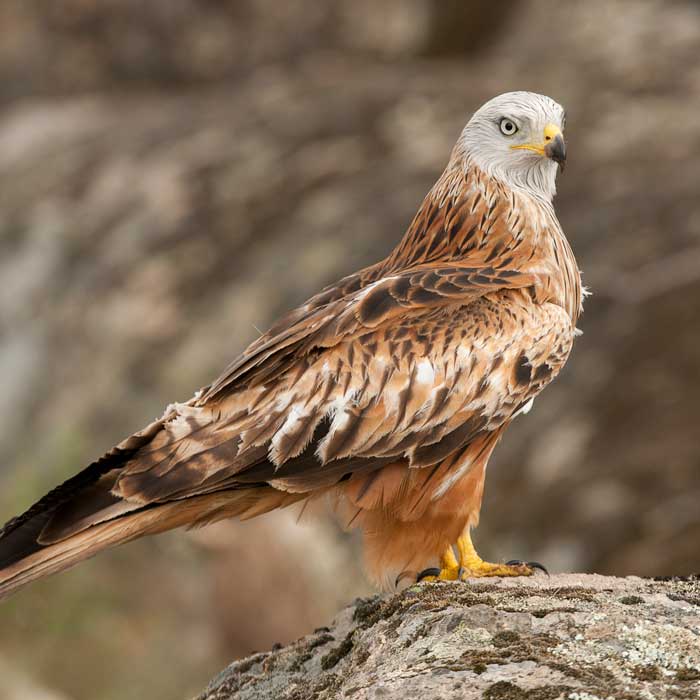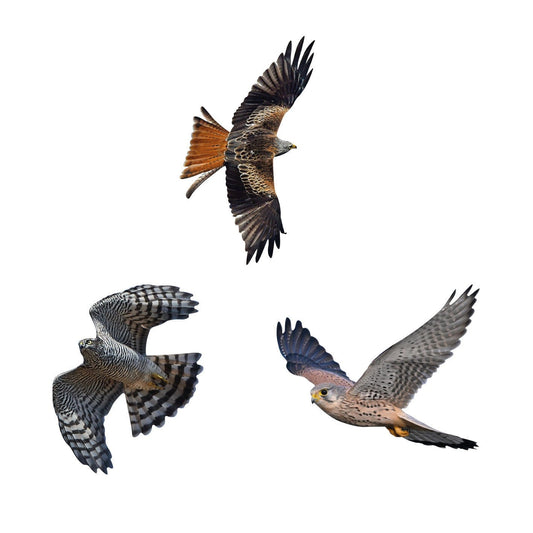
Red Kite
The majestic red kite, a distinctive bird of prey with a striking appearance and lifestyle, is a symbol of open landscapes and intact ecosystems. This fact sheet provides a detailed overview of the biology and ecology of the red kite and highlights the importance of its protection and conservation in natural habitats.
Red Kite Products
-
Bird protection set of 3 - small
Regular price 14,90€Regular priceUnit price / per -
Animal display red kite - sitting
Regular price From 59,90€Regular priceUnit price / per -
Red Kite - flying (bird protection)
Regular price 16,90€Regular priceUnit price / per -
Bird protection set of 3 - large
Regular price 36,90€Regular priceUnit price / per -
Animal display red kite - sitting - outdoor set
No reviewsRegular price 67,70€Regular priceUnit price / per -
Animal display red kite - flying - outdoor set
No reviewsRegular price 110,70€Regular priceUnit price / per -
Animal display red kite - flying
Regular price 99,90€Regular priceUnit price / per -
Animal set - forest birds
Regular price 329,90€Regular priceUnit price / per369,90€Sale price 329,90€Sale
Profile: Red Kite
-
Scientific classification
- Class: Aves (birds)
- Order: Accipitriformes (birds of prey)
- Family: Accipitridae (Accipitridae)
- Genus: Milvus
- Species: M. milvus (Red Kite)
-
Physical characteristics
- Size: Body length of 60-70 cm
- Wingspan: 150-170 cm
- Weight: 800-1200 g
- Special features: Reddish-brown plumage, deeply forked tail, long, narrow wings, bright feathers on the primaries and secondaries, shrill call.
-
Habitat and distribution
- Common regions: Europe, North Africa, parts of the Middle East
- Habitat: Open terrain such as meadows, fields, moors, but also forests with adjacent meadows and rivers.
-
Nutrition
- Diet: Mainly scavengers
- Typical diet: Carrion of small to medium-sized mammals, birds and fish, occasionally also live prey such as rodents, lizards and insects.
-
Reproduction and lifestyle
- Breeding season: Spring
- Nest building: In tall trees, often in old crows’ nests or specially built eyries
- Egg laying: 2-3 eggs per clutch
- Brood care: Both parents participate in the incubation and rearing of the young
- Social structure: Usually in pairs or small colonies, migratory bird with winter quarters in warmer regions.
-
Lifespan and protection status
- Life expectancy: Up to 15 years in the wild
- Endangered status: Endangered due to habitat loss, pesticide poisoning, and direct persecution.
- Conservation measures: preservation and protection of habitats, establishment of protected areas, reduction of pesticide use, education on the protection of the red kite.








